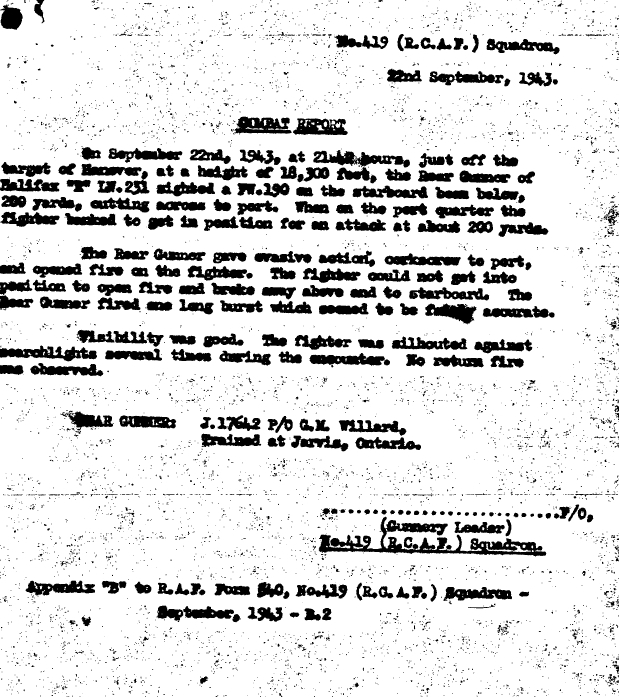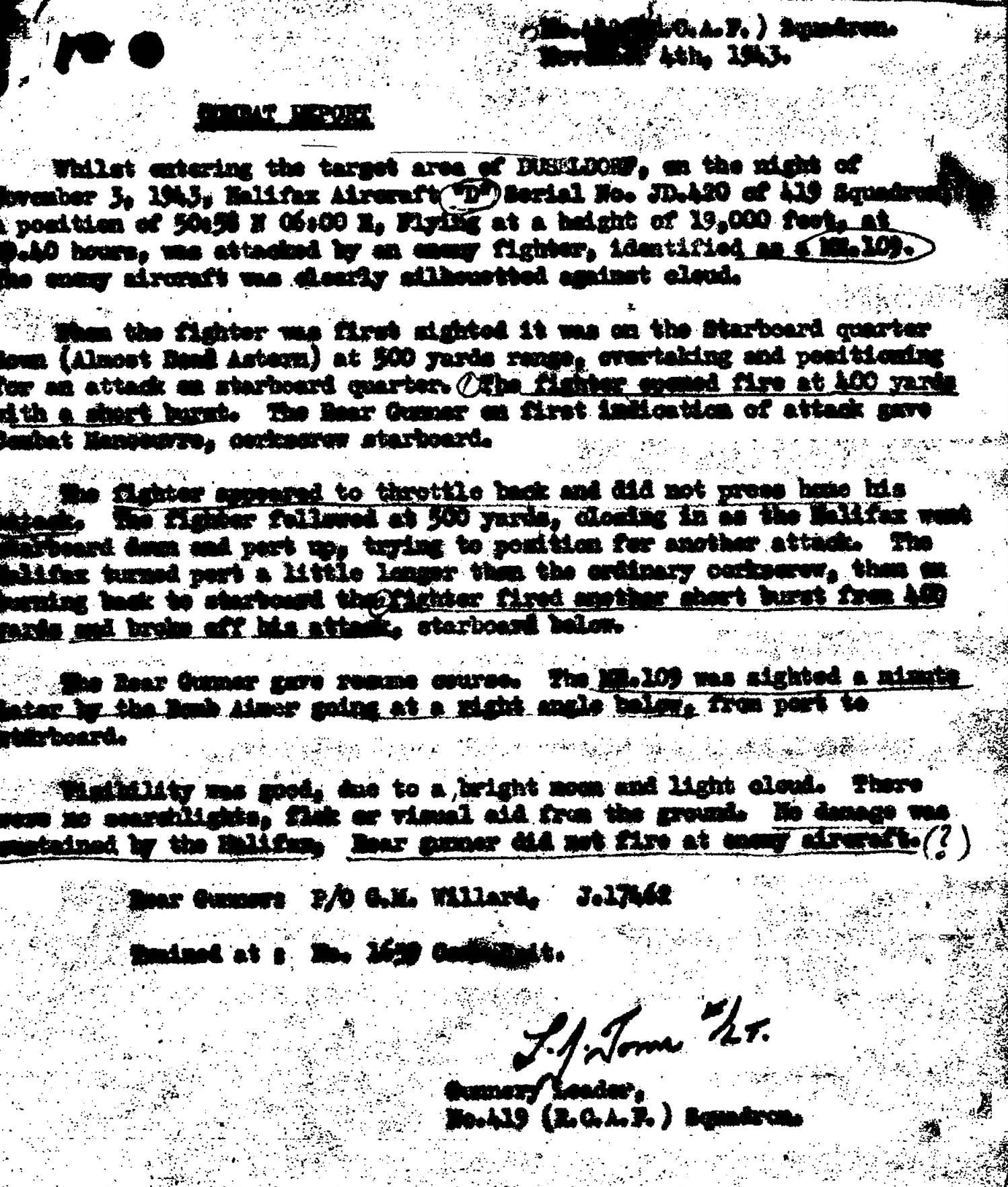The Beginning
Harold Thomas Brown was born in Biggar, Saskchewan. Enlisted in Saskatoon on July 16th 1941. Trained at No. 2 ITS, No.19 EFTS, No. SFTS and graduated July 30 1942.
On August 10th 1943 P/O Brown and his crew reported to 419 Squadron. His crew were:
P/O L. Leshko Navigator
F/S H. Finner Bomb Aimer
Sgt. J.J. Greer WAG
Sgt. W. MacDonald Flight Engineer
P/O G. M. Willars Air Gunner
The second Air Gunner position was filled by a series of different Air Gunners.
Operations Begin
After F/O Brown's last 2nd Pilot operation on August 12/13, he and his crew awaited their first operation together. The wait lasted ten days. Then F/O Brown and the crew were assigned Halifax BB378 for this their first operation together. On this August 22/23 operation they borrowed Sgt. David Turbitt a gunner from the Betcher crew. And on the next operation began a series of different gunners.
The one gunner who stayed with the crew was P/O G.M. Willard and whose work as gunner is shown below in two Combat Reports.
The crew proved their abilities during all their operations. Although in two particular operations showed their dedication to their duties in the face of mechanical failures. On August 27/28, 1943 outward bound to Nuremburg the port outer engine failed.
They continued on and returned safely to Base on 3 remaining engines.
And then again a few days later on August 31/September 1, 1943 on a raid on Berlin the starboard inner engine failed. This time while in the target area. The lessening of weight with the bombs dropped on the target greatly improved the ability to gain altitude and make back to Base.
These two events are so close in detail, with only the times when the engines failed. One failing on the way to the target and the other while nearing the target area. They have sometimes been mixed up in other sources.
In March of 1944 Brown was promoted to F/L and became the Deputy Flight Commander.
Combat Reports
Night Of September 22/23

Night Of November 3/4

From:
Moose Jaw Times Herald of Tuesday, October 26, 1943
Biggar Flier Wins High Praise for Gallantry
London, October 26, 1943 – (CP) –
The port outer motor of the Halifax bomber out of commission 170 miles from the target, a 21-year-old Saskatchewan pilot – Flying Officer Harold Brown of Biggar, Saskatchewan – carried on with three motors to paste Nuremburg from 9,000 feet the R.C.A.F. reported Sunday night in an overseas press release. Although Brown’s feat is rated as “gallantry” by his superiors the young skipper figures it seemed “the only thing to do because there were hundreds of other bombers coming along behind us.” When the motor sputtered feeble and conked out the Halifax was at 17,000 feet but with a full load could not maintain height and fell 8,000 feet before the bombing run was made. “On the way out from the target they came pretty close to us with flak but we were able to get away from the stuff by doing a little weaving,” said Brown. The young pilot praised the work of his navigator, Flying Officer Lloyd Leshko of 1931 Broadway Avenue, Saskatoon, who brought the big kite safely back to the base. “He kept us on track all the way,” said Brown.
DFC September 25th 1943
One night in August 1943, this officer piloted an aircraft detailed to attack Nuremburg. Although one engine of the bomber failed early on the outward flight, Flying Officer Brown continued to the target and bombed it successfully. Some nights later this pilot again flew with distinction on an operation against Berlin. On both occasions he displayed great determination and devotion to duty.

